Search Results for Tag: USA
Climate change back on the agenda?
Trawling the media for climate-related stories over the weekend, I began to see some signs that the message might be getting across after all. I had just put the finishing touches to my story on “Why we don’t want to hear about climate change“, based on interviews with sociologist Kari Marie Norgaard from the University of Oregon and psychologist Per Stoknes from the Norwegian Business school, when I heard US Secretary of State John Kerry’s announcement that the USA and China would be cooperating and exchanging data in the run-up to the 2015 Paris climate talks, where a new climate deal is supposed to be agreed. I found myself feeling just a little bit more optimistic. If these two key players really put climate protection into action, maybe we will be able to get somewhere. A report on a study by the Chinese government on the disastrous air pollution in Beijing is not happy reading, but gives grounds to assume the Chinese government has to be serious about taking emissions in hand.
Arctic ambassador – a sign of the times?
Another announcement by the US Sec of State leaves me with mixed feelings. There is going to be a US ambassador for the Arctic. On the one hand, it is always good to see the Arctic getting attention. On the other hand, the motivation does not make me jump for joy. An item from the news agency AFP writes of “a region increasingly coveted by several countries for its oil and other raw materials”. Indeed. That is the worrying bit. In case you missed it, (the Arctic announcement did not get huge coverage), Kerry said in his statement:
“The Arctic region is the last global frontier and a region with enormous and growing geostrategic, economic, climate, environment and national security implications for the United States and the world…President Obama and I are committed to elevating our attention and effort to keep up with the opportunities and consequences presented by the Arctic’s rapid transformation – a very rare convergence of almost every national priority in the most rapidly-changing region on the face of the Earth”. It is good to see climate and environment get a mention at least.
A “Stern” warning
The Guardian had a guest article by Nicholas Stern, the author of that famous Stern Report on the economics of climate change back in 2006 (yes, it really is that long ago).The background to this, of course, is the wild weather in the UK. Now I do not wish that kind of weather on anyone, but in terms of drawing attention to climate change it has certainly been very important. Stern writes “The record rainfall and storm surges that have brought flooding across the UK are a clear sign that we are already experiencing the impacts of climate change”. He makes a clear case for linking the two. He also brings in the other extreme weather around the globe, including Australia, Argentina and Brazil and the devastating typhoon Haiyan in the Philippines last year. Stern has clear advice for the politicians:
“This is a pattern of global change that it would be very unwise to ignore.” Stern says the risks are even bigger than when he wrote the 2006 report. “Since then, annual greenhaouse gas emissions have increased steeply and some of the impacts, such as the decline of Arctic sea ice, have started to happen much more quickly.”
I hope a lot of decision-makers and influential business people have read or will still read Stern’s article. He calls for rapid action and investment. He has a clear message for the European Union, currently not the most popular international organisation with the British government. “The UK whould work with the rest of the EU to create a unified and much better functioning energy market and power grid structure. ‘this would also increase energy security, lower costs and reduce emissions. What better was is there to bring Europe together?” Other measures recommended would be to implement a “strong price on greenhouse gas pollution across the economy”. This, remember, is a renowned economist, not an environmental campaigner. He also warns against the temptation to cut overseas aid to fund adaptation to climate change. “It would be deeply immoral to penalise the 1.2 billion people around the world who libve in extreme poverty…In fact, the UK should be increasing aid to poor countries to help them develop economically in a climate that is becoming more hostile largely because of past emissions by rich countries”- Yes. Yes. Yes.
Don’t let the weather distract from your climate awareness!
The other piece of writing which inspired me over the weekend was in the ImaGeo blog by Tom Yulsman: “Move over polar vortex“. He looks at the new analysis produced by the UK’s Met Office:
“If a new scientific analysis is correct, the repeated bouts of extreme weather on either side of the Atlantic are indeed unusual – and both are manifestations of a chain of climatic teleconnections that reach half way around the globe and all the way to the tropics”.
There is a lot of talk in this piece of whether the polar vortex is weak (as discussed in my article More Arctic Weather in a Warming World?) Or actually “particularly intense”. I would recommend you read Tom’s blog for yourselves for the details and his views. But the insight I would leave you with here as “food for thought” is where he quotes a paper in the journal Science.
“They conclude that the recent discourse focusing on the possible connections between winter weather and climate change distracts from the bigger issue: that is, regardless of extreme winter weather, climate change is undoubtedly real, and that harsh winters are not what we really need to be concerned about going forward as the climate continues to change”.
People love to talk about the weather. But if we use every instance of unusual weather to question the overall trend of global warming, with all the complex effects that has on our climate, winds, oceans etc, we run the risk of losing a necessary sense of urgency when it comes to reducing emissions. I am reminded, as I often am, of a young climate ambassador from the Netherlands during a fact-finding trip to Alaska in 2008. As we stood at the Visitor’s Centre for a glacier which is now no longer visible from that spot because it has retreated so far, he said that just brought home to him how “everything is connected”. Our everyday lifestyle in the industrialised world is melting the Arctic ice – and that, in turn, is contributing to the changing climate patterns which can radically alter the planet.
Climate Change: Arctic in denial?
If there is one place you would imagine people would have to be conscious of climate change, it would be the Arctic, where the temperature is rising around twice as fast as the global average. As I mentioned in the Ice Blog yesterday and in my article on dw.de from here in Tromsö, changes to the sea ice and temperature are altering life rapidly and visibly for people in the high north. So I was intrigued by a side-event here at Arctic Frontiers, which made it clear that this does not necessarily mean people are aware of climate change and what it involves – at least not consciously or actively.
“How to Create a Climate for Change” was the subject of the workshop organised by UArctic, the University of the Arctic. (That is not the same as Tromsö University, which is called Norway’s Arctic University. UArctic is a cooperative network of northern universities and other educational institutions.)
The workshop was looking at awareness of climate change in Norway and other Arctic regions. Kari Marie Norgaard is Professor of Sociology at the University of Oregon in the USA. She spent ten months researching in Bygdaby,a community in northern Norway and told us she had actually monitored an “incredible disconnect between the moral, social, and environmental crisis of climate change and people not realising it is happening.”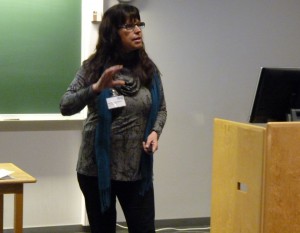
This is not limited to the Arctic, although it seems particularly striking in an area undergoing such major changes. There seems to be a widespread paradox in that climate change is leading to dramatic alterations to ecology systems and significant social consequences, but that there is no widespread sense of a need for urgent action.
This is not limited to the Arctic, although it seems particularly striking in an area undergoing such major changes. There seems to be a widespread paradox in that climate change is leading to dramatic alterations to ecology systems and significant social consequences, but that there is no widespread sense of a need for urgent action. Humans, says Norgaard, are “not getting it”. They are carrying on regardless, acting as if nothing were happening.
Denial but not climate scepticism
She speaks of “denial”, but not in the sense that people do not accept that climate change is happening. Norgaard told me she has come under a lot of pressure from the extreme right in the USA, who do not understand her distinction. Her hypothesis is that we know climate change is happening just as we know violence, rape or massacres happen. But we do not perceive it as psychologically disturbing or carrying a moral imperative to act. Norgaard is interested in how and why people collectively resist information about climate change. She focuses on Norway rather than her home country USA because this is a country with a high rate of newspaper readership, high levels of political participation,and where climate change is more visible in the northern region, and people know it is happening.
But in spite of the fact that Bygdaby is highly dependent on farming and tourism, where the climate is important, the fact that the winter had been warm, the snow was two months late and artificial snow had to be used for skiing, did not result in a heightened interest in climate change. In fact, she says, it was invisible in social or political life. One of her conclusions is that people want to protect themselves to some extent and so prefer to live as if climate change was not happening. Her theory is that people don’t want to feel guilty about their lifestyle and also try to avoid fear of the future and feeling helpless.
The greatest communication failure of all time?
Althouth Norgaard did her research in Norway, she says the findings apply equally elsewhere, including the USA, where regions are already experiencing climate impacts with economic consequences, but people don’t want to accept that it could have something to do with their lifestyle and require unpleasant action.
Per Espen Stoknes is Associate Professor at the Center for Climate Strategy of the Norwegian Business Institute NBI. He says surveys going back to 1989 in Norway show a decrease in people’s concern about the greenhouse effect and climate change .Only
4 in 10 see it as a problem and only 8% see it as being of importance. Espen stresses this is not because of a lack of knowledge. In fact, he thinks the better the facts get, the less people care.
Stoknes came up with an interesting figure. Apparently the public has the impression only 55% of climate scientists agree on global warming. In realty, it is 97%.Getting the message about climate change across is the ““Greatest communication failure of all time”, says Stoknes.
Who’s to blame?
Some of the responsibility lies with the scientists in his view. He says scientists need to lecture people less and discuss more. Another problem is that people tend to think of climate as being very distant in time and space. An IPCC estimate for 2100 seems a long way away. For people outside the Arctic, melting sea ice also seems geographically very remote. The same applies to places like Bangladesh or the Maldives.
Stoknes suggestions for improving the situation are not new. But evidently, the message has not got across – or the suggestions proved not effective. He says the media should have less gloom and doom and present more positive stories and examples of practicable action. If only it were that simple.
I remember numerous heated discussions on this topic at a Global Media Forum on Climate Change and the Media in Bonn in 2010, and atvarious other events I was involved in. Communicating climate change in a way that will make people take action in their everyday lives and put pressure on governments to do the same, remains a priority and a challenge.
One idea Stoknes has strikes me as being useful. He stresses the power of social norms to change behaviour, and suggests campaigns that make people compete with their peers – neighbours, other towns, friends, relatives, for being climate-conscious, can be effective. He talked about the success of an app where people can record and compare their energy saving.
Another possibility is to make “greener” options the default, something I was talking further about with some US colleagues today. If the normal way a printer works is to use both sides of the paper, for instance, people will do that. Not though if they have to change a setting
Plenty of food for thought here. The psychological and social dimensions of climate change awareness clearly deserve more consideration.
Climate change and the polar vortex
If you live in one of the North American areas hit by the latest big freeze, you may well have been hearing someone say “so much for global warming” over the last week or so. If you live on this side of the Atlantic, you might have been tempted to worry more about climate change if you were being battered by storms or gales. Then there are those here in Germany saying “give me more of this warming”, with the birds tweeting and the bushes blooming as if we were already in the middle of spring.
![]() read more
read more
Arctic melt worries UN and White House
The UN weather agency WMO (World Meteorological Organisation) has confirmed that the Arctic’s sea ice melted at a record pace in 2012, the ninth-hottest year on record. With just 3.4 million square kilometres (1.32 million square miles) during the August to September melting season, the sea ice cover was a full 18 percent less than the previous low set in 2007. The WMO’s Secretary-General Michel Jarraud said this was a “disturbing sign of climate change”, and pointed to the link between climate change and extreme weather events.
Meanwhile, a special briefing was called at the White House to discuss the possibility of the Arctic becoming ice free in the summer within just TWO years. Nafeed Ahmed, director of the “Institute for Policy Research & Development” headlines his post for the “Guardian“: “White House warned on imminent Arctic ice death spiral”. He describes the meeting, including NASA’s acting chief scientist Gale Allen, the director of the Department of Homeland Security and the Pentagon as “the latest indication that US officials are increasingly concerned about the international and domestic security implications of climate change”.
10 Arctic specialists were called in to advise the US government, including marine scientist Professor Carlos Duarte, currently director of the Oceans Institute at the University of Western Australia. I met and interviewed Prof. Duarte back in 2011 at the Arctic Frontiers conference, when he worked with the Spanish Council for Scientific Research. At that time, he was already calling for urgent action and warning of the danger of “climate tipping points”, including the melt of the Arctic sea ice. His conclusions are based on research which was presented in an article in Nature Climate Change last year.
The West Australian newspaper quotes Prof. Duarte as saying the “snowballing situation would prove as hard to slow down as a runaway train”. He told the paper the ice melt was accelerating faster than any of the models could predict, and the prospect of an Arctic Ocean free of ice had been brought forward to 2015, compared with a prediction in 2007 that at least a third of the normal sea ice extent would remain in summer in 2100. When I spoke to him in 2011, the US navy was already assuming a date of 2050 and Duarte said he expected it to be even earlier.
Professor Carlos Duarte on Arctic Tipping Points
Prof Duarte also warned of the increasing danger of melting methane. Let me quote a little from the interview:
DUARTE: “We know from the history of ice covering the planet along geological time scales that ice is strongly a non-linear element in the earth’s system. It’s one of the components that show very rapid, very abrupt changes and tipping points. So we expect that once the ice will be lost quickly from the Arctic and also from the shelves in Greenland, then other forces will be set in motion, and many forces will be set in motion by loss of ice. One of them is the release of methane hydrates from the shallow continental shelves, mostly around Siberia, and those are molecules of methane that are trapped into ice in the sediments of the continental shelves and in the permafrost on land. So if this ice melts, this methane can be released abruptly and suddenly. And deposits of methane trapped in the shallow sediments of the Arctic amount to about five times the greenhouse power that humans have set in motion through burning fossil fuels. So if this five times what we have released in 150 years is released within a few years, that would be detrimental to the climate system and it could lead to a very rapid warming, and could again set in motion other forces like increased freshwater discharge to the Arctic, which has already increased by 30 percent. And this involves a greater export of fresh water and buoyancy to the Atlantic, which may affect global circulation and global currents, and those in turn will affect regional climates also further south to the sub-Arctic region. Also, warmer temperatures are leading to dieback of the boreal forest and also the peat deposits in the boreal region are drying up to the extent that they can catch fire.”
(IRENE QUAILE: How close are we?)
DUARTE: “We very much know what the threshold and the tipping point for the release of methanes will be, because the methane is kept in the hydrates, deposits in the salty sediments by ice, frozen sediments, and we know the freezing point of salty sediments may be around minus 1 degree. So when the temperature of water in the summer goes well above freezing point, the hydrates will defrost and the methane will be released. So what we need to monitor is the temperature of the shallow waters in the Siberian shelf and other shallow waters in the Arctic, in the Canadian region as well, and see how close they’re getting to temperatures of 3 and 4 degrees, which will be those that will lead to melting of the hydrates.”
Scary? The interview, it seems, is as relevant as ever, the Professor’s warnings more urgent. I wonder what it feels like to be called in to the White House to brief the government of a country that is both a key player in the Arctic and a top emitter of the greenhouse gases that are causing the melt? On the one hand it must be satisfying for the scientists to know they are finally being heard. But there must also be some frustration about the extent of dangerous climate change that had to be set in motion first. Has the Arctic ice already reached a “tipping point”?
Let me close with another quote from that interview with Carlos Duarte:
DUARTE: “Unfortunately society is much more mobilised by opportunities than by risks. So the discourses and warnings of risks actually almost lead to inaction by society, whereas the sight of opportunities encourages society to set themselves in motion. So the opportunities for economic growth in the Arctic have dominated the discourse and the actions by society and policy makers. Those opportunities are new navigation routes across the Arctic, and the exploitation of oil, gas and fisheries, that were not accessible just a few years ago. The paradox in this is that the Arctic countries recognise that the forces that are improving access to these resources is actually climate change and that the reason for this climate change is the burning of fossil fuels by humans. Arctic nations themselves are responsible for 26% of the release of these greenhouse gases and are taking advantage of these opportunities, which will involve greater emissions of greenhouse gases. (…) I think there should be a balance between the economic growth these opportunities could bring about and the economic losses, they may bring about, which I don’t think have been quantified.”
A greener Arctic in a warming climate
A new study of thirty years of satellite data shows considerable changes to the Arctic tundra. The difference between the seasons is diminishing, resulting in increasing plant growth and a less clear distinction between North and South. Vegetation is moving northwards as climatic conditions shift.
The study, conducted by an international team of 21 researchers from 17 institutions in 7 countries and funded by NASA is published in Nature Climate Change. Professor Bruce Forbes from the Arctic Centre of the University of Lapland in Rovaniemi, Finland, one of the authors, says indigenous reindeer nomads in northern Russia are already experiencing increases in the height of deciduous shrubs.
Although conditions differ in different parts of the region, overall the growing season is beginning earlier and the autumn freeze starting later.
Climate News Network quotes Professor Forbes as saying “we are seeing more frequent and longer-lasting high pressure systems. In winter, the snow cover comes later, is deeper on average than in the 1960s, but is melting out earlier in spring”. Forbes and his research team used dendrochronology, the science of tree-ring measurement to confirm the findings.
“In a few decades, if the current trends continue, much more of the existing low shrub tundra will start to resemble woodlands as the shrubs become tree-sized”, says Forbes.
The warming will change ecoystems considerably and also result in “feedback” effects. Melting permafrost means peat and vegetation will decompose, releasing methane and carbon dioxide into the atmosphere.
Let me close with “food for thought” from Tim Radford, the author of the Climate News Network report on the study:
“Climate is a complicated business, and there is always legitimate room for argument about the validity of one selected set of measurements, a potential bias in the observations, or the reliability of comparison data collected two generations earlier. But vegetables can’t be fooled. Plants grow where they can. If deciduous shrubs are growing taller, and colonizing sites ever further north, then conditions must be getting warmer, and staying warmer.”
It’s hard to argue with that.



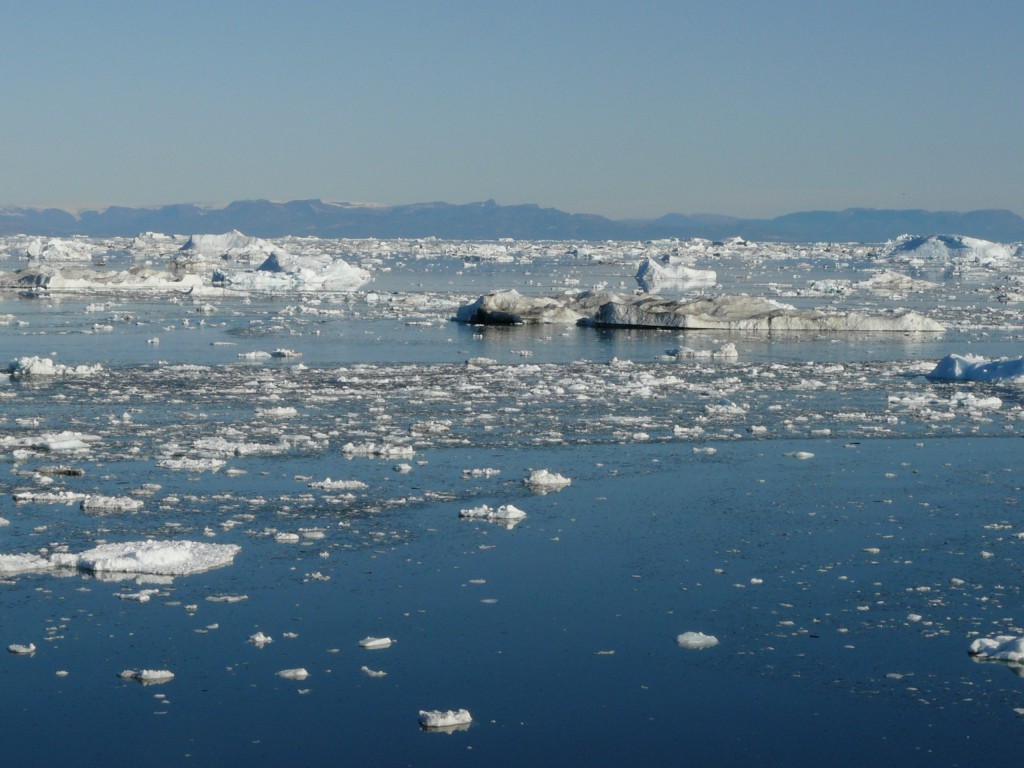

![6418.3[1]](http://blogs.dw.com/ice/files/6418.31.jpg)


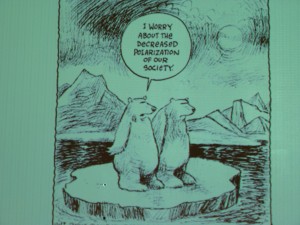
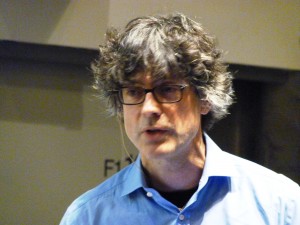
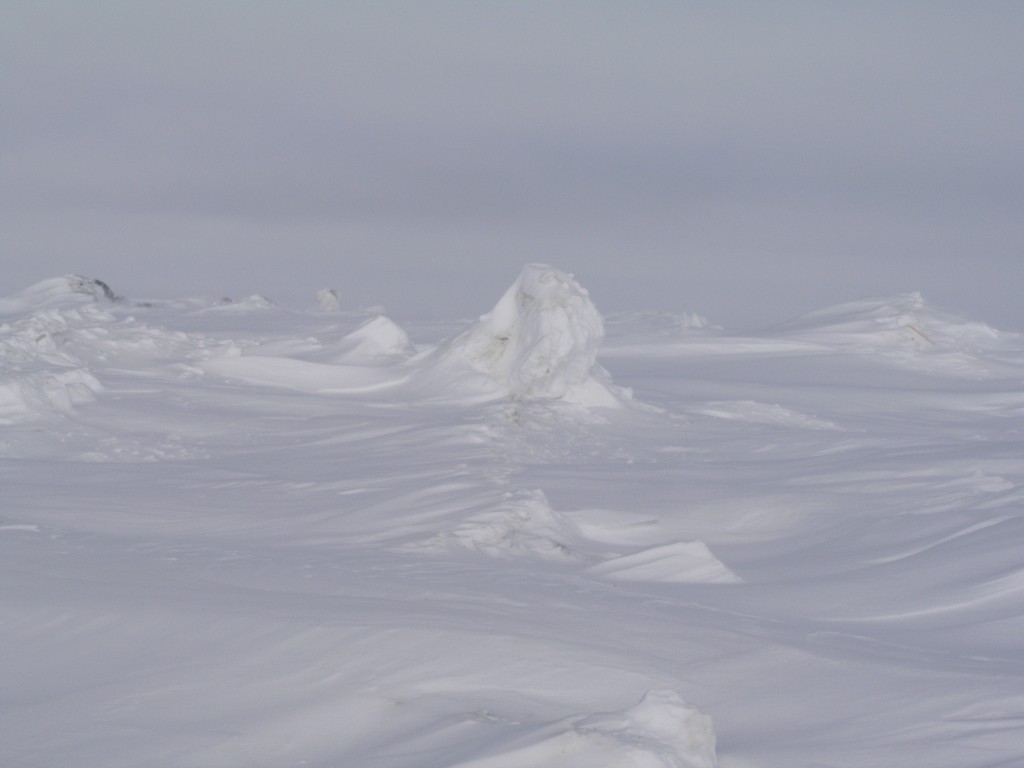
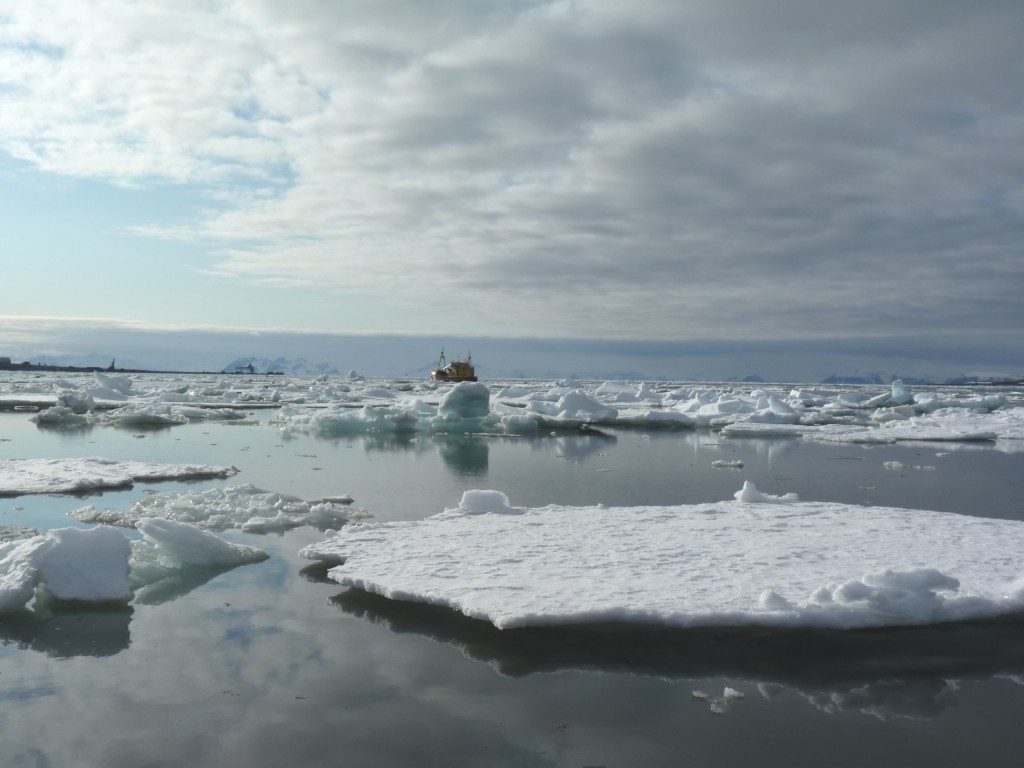

















Feedback